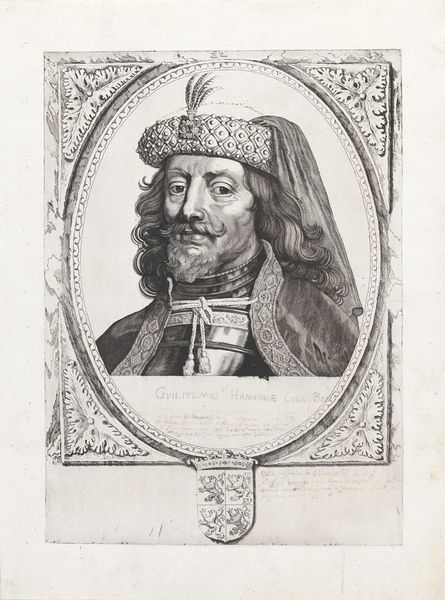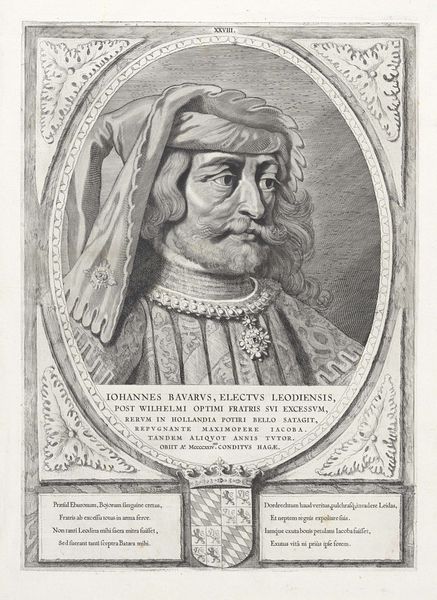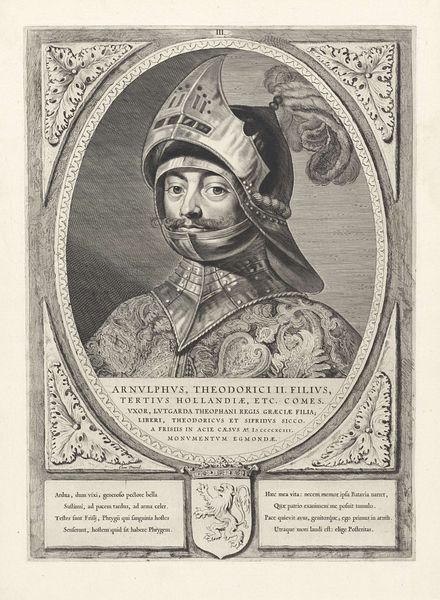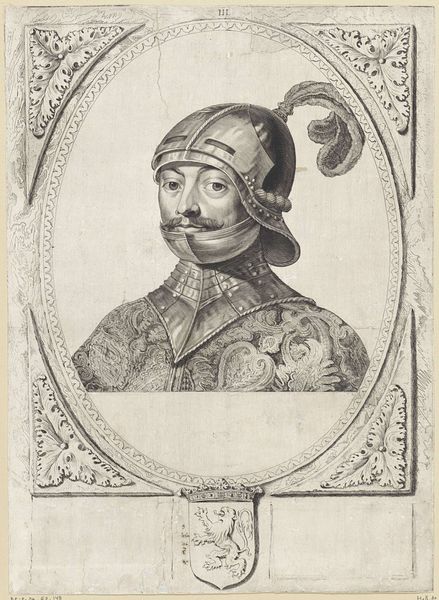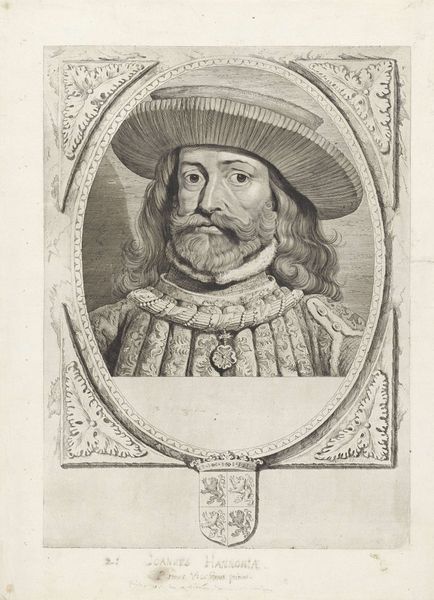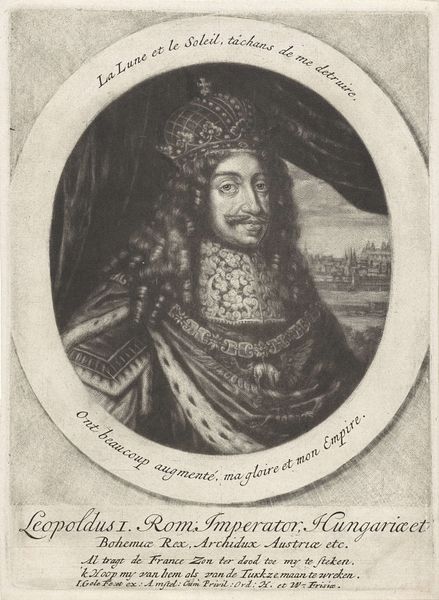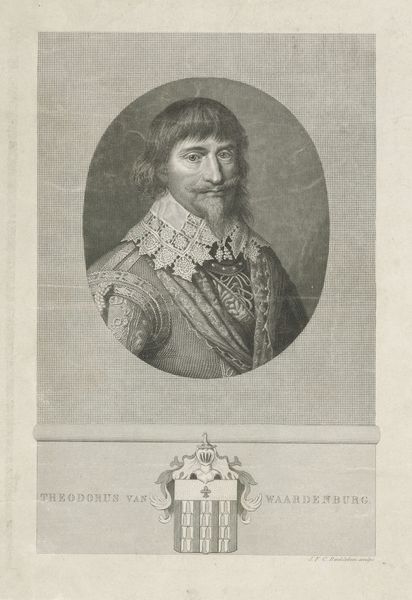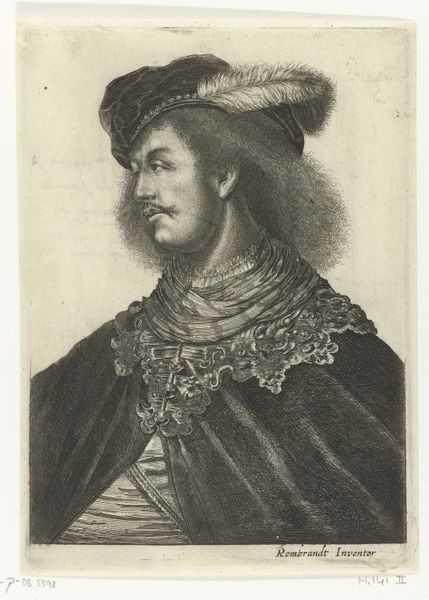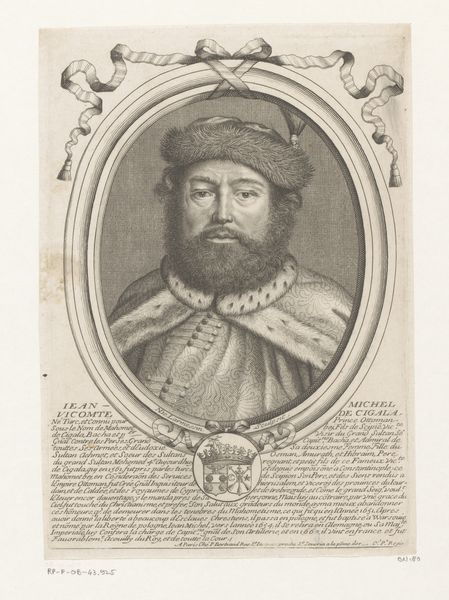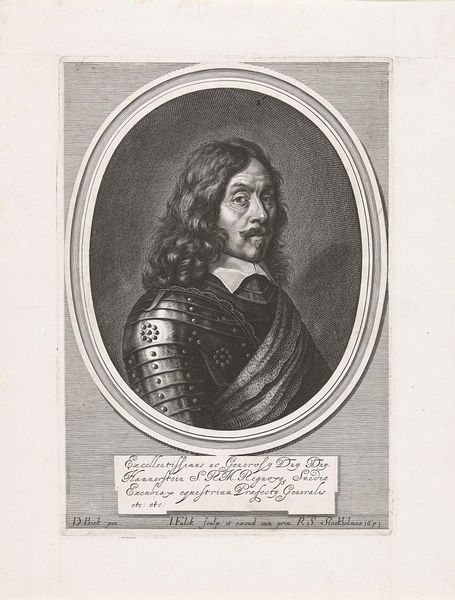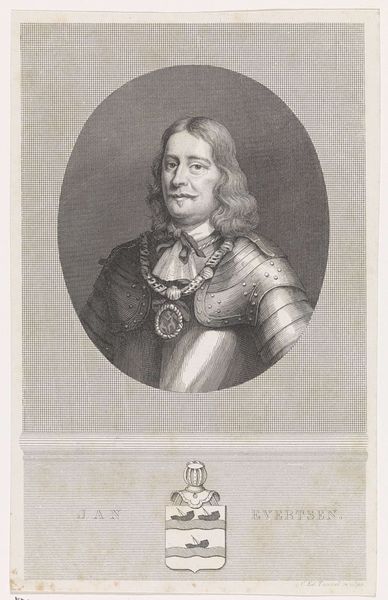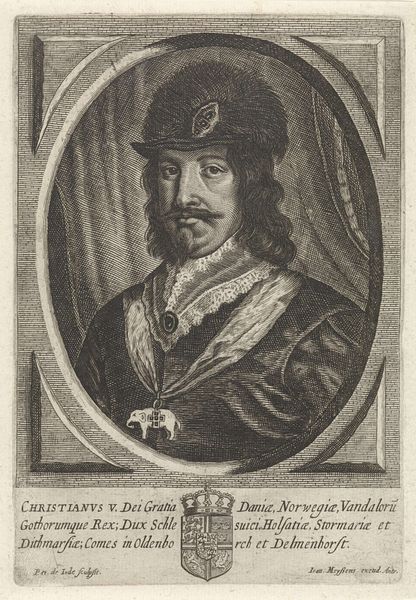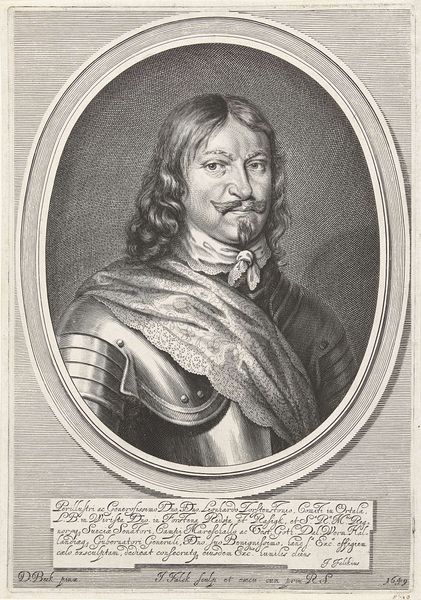
print, engraving
#
portrait
#
medieval
# print
#
old engraving style
#
history-painting
#
engraving
Dimensions: height 213 mm, width 139 mm
Copyright: Rijks Museum: Open Domain
Editor: This is "Portret van Jan van Beieren," or "Portrait of John of Bavaria," an engraving by Johann Wilhelm (I) Kaiser, made sometime between 1840 and 1884. I’m struck by the level of detail in the hatching; it really defines the textures, but I wonder if the limited tonal range flattens the image? How do you see it? Curator: The technical precision is indeed noteworthy. Observe the density and directionality of the engraved lines. How do they contribute to the overall form and the perceived weight of the figure? Notice the linear quality defining the planes of the face and the drapery. It certainly leans into line as its defining element. Editor: So, you're drawn to the relationship between line and form, emphasizing how they construct the visual image. Curator: Precisely. The medium itself, engraving, imposes a certain order. The artist's deliberate manipulation of line, shadow, and texture builds a sophisticated visual structure. We must also consider the oval format, which isolates and frames the figure. Does this heighten the subject’s importance? Editor: It really does! Focusing attention on his head and shoulders adds a degree of monumentality, especially coupled with the heraldry below the portrait. Curator: Consider, then, how the heraldry at the base, along with the lettering, anchors the composition. Do these elements provide further visual cues about hierarchy and status? Editor: Absolutely. So, analyzing the form of the work really brings out the ways the artist structured a commentary on the subject’s place in the world. It shifts focus from whether this work mirrors history, and lets you think about how it visually recreates history. Thanks for highlighting that! Curator: Indeed! Reflecting on its structure reveals a new perspective on its purpose.
Comments
No comments
Be the first to comment and join the conversation on the ultimate creative platform.
